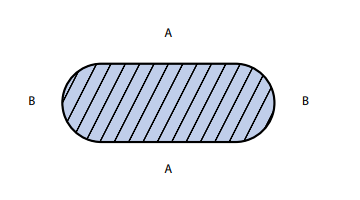Ask the Expert - Tensile Strength vs. Hardness: Importance for Wave Spring and Retaining Ring Design
Welcome back to the Ask the Expert blog. The blog is designed to help educate you on all things retaining rings and wave springs. This week, we talk about tensile strength and why it’s important in wave spring and retaining ring design.
To ensure you know how a material will perform in a working environment, several physical properties can be measured to better understand material behavior. Having an accurate measurement strategy for raw materials prior to production helps prevent premature failure of retaining rings and wave springs. Here at Smalley, one of the physical properties we measure is the ultimate tensile strength of our alloys so our engineers can design the best possible retaining ring or wave spring for your application needs.
What is Tensile Strength and How is it Measured?
Tensile strength is the material’s resistance to breaking while under tension, which is a function of stress and strain as well as the cross-section of the material. It can be measured using a tensile tester. A tensile tester works by applying a mechanical pulling force to the material. This develops a rise over run curve that reveals a profile of the material’s tensile properties, including the ultimate tensile strength as shown in Figure 1. If the ultimate tensile strength is exceeded, necking and fracture occur as shown in Figure 2.

1.Fig 1. Stress-Strain Curve. Curve generated by a tensile tester which shows ultimate tensile strength and point of fracture.
Fig 2. Tensile Tester. Fracture of a material during tensile testing.
What is Hardness and How is it Measured?
Hardness refers to the amount of resistance to deformation that material has. The standard testing method involves pushing a diamond pin down onto the material’s surface and measuring how far the pin goes down the cross-section. The depth that the pin travels is inversely proportional to hardness.
Tensile Strength vs. Hardness
Common concerns with hardness testing are accuracy and repeatability. Hardness is extrapolated from the depth measured, which then correlates to tensile strength. This indirect route can introduce more error. A tensile test is more accurate because it provides an actual reading of the tensile strength.
When a material is cold rolled, the top and bottom surfaces (“A”) become harder as they are exposed to more work than the round side edges (“B”). Because of this, the hardness reading can be different if measured in the center or near the edge. A tensile test has better repeatability because the wire will break at the same force.

How Does Measuring Tensile Strength Benefit the Smalley Design Process?
Smalley engineers use ultimate tensile strength to determine the maximum stress that a retaining ring or wave spring can handle. Measuring material tensile strength is important for the Smalley design process, because it can help to calculate the theoretical cycle life of a wave spring or it can reveal at what stress level a part takes on a permanent set or material fracture. Tensile strength is also used as a validation check to ensure incoming raw material meets industry specifications. Lastly, our engineering experts use it for our rings and wave springs to ensure overall consistency.
That's all for this week. Check Ask the Expert next week to learn more about wave springs and retaining rings.
Do you have your own question for Ask the Expert? Submit your question below today!
1.“Typical Stress vs. Strain Diagram for a Ductile Material.” Wikipedia, 2008, en.wikipedia.org/wiki/File:Stress_Strain_Ductile_Material.pdf.



Connect With Us